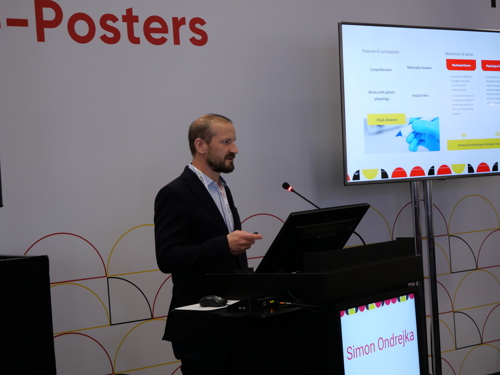Glaucoma
Can Glaucoma Patients Gain Long-Term IOP Control?
New study shows promising long-term results for novel procedure.

Timothy Norris
Published: Monday, June 3, 2024
“ We are very happy to have a procedure that does not use any metal device in our patient’s eye while still achieving a significant reduction. “
Ab interno canaloplasty effectively maintains long-term IOP control in glaucomatous patients, reducing the need for topical medications, a long-term follow-up study suggests. A six-year, single-centre study recently published in the Journal of Glaucoma looked at ab interno canaloplasty with the iTrack microcatheter (Nova Eye) performed as a standalone procedure or combined with cataract surgery in patients with mild to moderate primary open-angle glaucoma (POAG).1
Ab interno canaloplasty is a novel MIGS procedure. Contrary to a common misconception, it is not necessary for a MIGS procedure to involve implant use, explained Simon Ondrejka MD, one of the study authors.
Circumnavigating the canal
This procedure starts with inserting the iTrack catheter into Schlemm’s canal through the anterior chamber and the trabecular meshwork. The device then circumnavigates the canal, separating the herniations of the meshwork into the collector channels, breaking inner lumen adhesions, and opening stenotic segments present. After navigating 360 degrees, the device is slowly withdrawn while releasing viscoelastic, thus completing the process of dilation of Schlemm’s canal. The trabecular meshwork and the collector channels remain dilated, directly addressing the aqueous outflow resistance and enhancing the physiological drainage of the aqueous humour.
Dr Ondrejka said this is a sutureless, safe, and effective procedure that can significantly reduce IOP in patients with POAG in the long term.
Of the 27 treated eyes, 4 underwent canaloplasty as a standalone procedure, and 23 received the combined treatment. Reduction of IOP was more than 20% in 61% of eyes, with a steady decrease up to 27% after six years—the longest ab interno canaloplasty follow-up available in the literature, he noted.
Fewer medications, for many years
The study showed almost all patients were able to gradually reduce glaucoma medications. The mean reduction was 52% from 1.9 medications at baseline to 0.9 at six years, with no significant difference between combined and standalone procedures. Of note, 39% of the patients were completely medication free after six years.
These patients are just grateful to be able to reduce their medications significantly or even entirely, observed co-author Norbert Koerber MD, PhD. Many of them suffered the burden of side effects before the procedure.
To investigate medication reduction, patients in the study were divided into groups according to the baseline number of medications. When conducted, this was the first time for an ab interno canaloplasty in Europe, so there was no precedent data to rely upon, Dr Koerber said.
Of the 18 patients already under IOP-lowering drugs, 4 were receiving three medications at baseline, 7 were receiving two medications, and 7 a single medication. Of these, 3 underwent the standalone procedure and 15 treated in combination with phacoemulsification.
Most striking is how significantly medication use was reduced in the long run, Dr Koerber noted. After three years, 1 eye was treated with three medications, 4 with two medications, and 6 with one medication only. Seven were medication free. Compared to preoperative measures, 16% of eyes took more medications at three years postoperatively than baseline, 22% took fewer medications, and 61% partially or completely reduced the overall quantity. The mean number of medications was lowered from 1.8 at baseline to 0.4 after one year, and this value remained substantially stable, with only a slight increase, over the study period.
This was a remarkable improvement for both the physicians and the patients, Dr Koerber said. Canaloplasty made it possible to obtain these results without implanting a foreign body in the eye, but only through the dilation of Schlemm’s canal, with long-lasting effects.
“We are very happy to have a procedure that does not use any metal device in our patient’s eye while still achieving a significant reduction, both in IOP and the number of medications,” he said. “All of this with no serious complications observed.”
Drs Ondrejka and Koerber presented at the 2024 ESCRS Winter Meeting in Frankfurt.


Norbert Koerber MD, PhD currently works at Augencentrum Köln, Germany, and the Clinica Oculistica, University-Hospital of Padova, Italy. He is one of the pioneers of the canaloplasty procedure. N.koerber@gmx.de
Simon Ondrejka MD is a cataract and glaucoma specialist at Augencentrum Köln, Germany.
1. J Glaucoma, 2024 Mar 1; 33(3): 176–182.